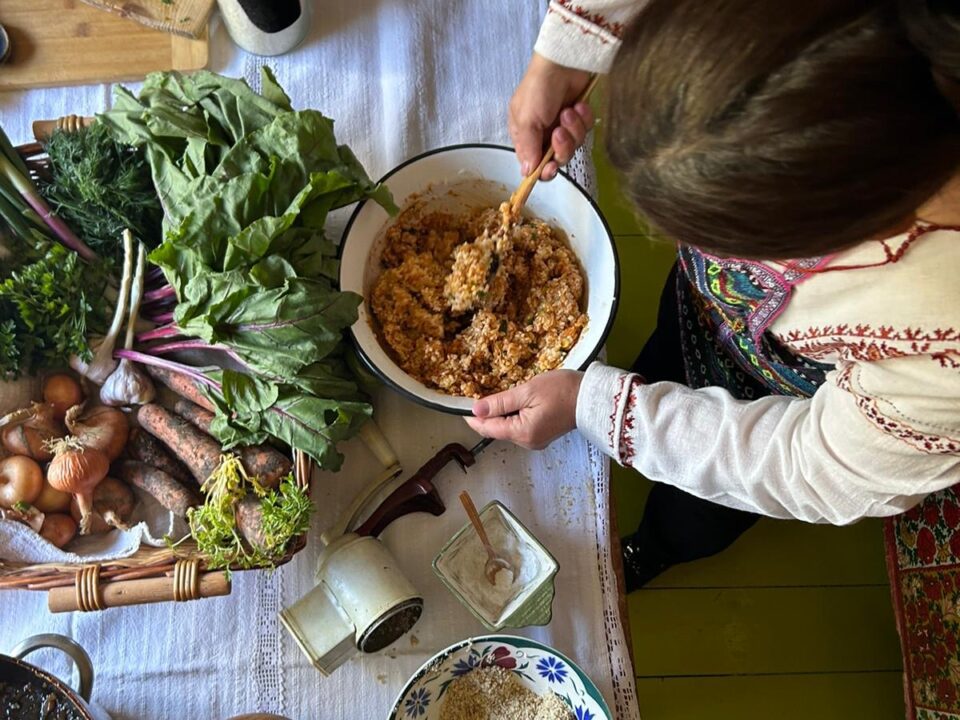
A Coffee Ceremony In Romania
January 9, 2020
Travel Makes The World A Better Place
April 1, 2020A place of lost souls and fornication, inhabited by thieves, easy women, beggars, and impoverished boyars. This was the very historical center of Bucharest at the turn of the 20th century described in one of the best novels inspired by the Romanian capital nightlife ever written – Mateiu Caragiale’s Princes of the Old Court (Craii de Curtea Veche in Romanian).
Caragiale, a love child of another well known Romanian playwright (I.L. Caragiale), wrote the novel between 1910 and 1927. It should have been a trilogy, but he never finished a second volume. Only one page survives from a third volume.
The book is celebrated as a chronicle of the decay of the Romanian aristocracy. It depicts the lives of the rich and educated boyar family descendants Pasadia and Pantazi. The two lead a mysterious existence filled with banquets, champagne, and orgies. During the day they are two mannered aristocrats, while during the night they refresh their senses by submerging in the muddy atmosphere of Bucharest brothels.
Their destiny intersects with that of Gore Pirgu, a brutish self-seeker who is on his way up on the social scale, who sells Ilinca, an impoverished young noblewoman, to the libertine Pașadia. His friend, Pantazi, offers to marry her to save her family honor, but she catches scarlet fever and dies. Pasadia dies of a heart attack during a sexual escapade.
Beyond the simple plot, however, the book catches what Bucharest’s center and its people looked like right before WWI. For over a century already, it had been a place of the outlaws.
***
In real life, in 1760 the Old court on the bank of Dambovita River became “unfitting” for the Wallachian royals and the king had moved his court to the Mogosoaia Palace, north of the capital.
Alexandru Ipsilanti builds the New Court in the Spirii Hill and the Old Court in the now Old Bucharest Center is abandoned completely after 1775. Therefore, it becomes the dwelling of people “without purpose”, a euphemism Romanians use for outlaws such as thieves, street people, prostitutes, beggars. During the day, they spent their time in the fairs and markets of the old neighborhood, while at night they took shelter in the ruins of the Old Court. They become the newly self-appointed “princes of the Old Court”.
In 1798, prince Constantin Hagherli sells the Old Court to merchants and they start building around it. In 1802, the “princes” rebel against the new commercial residents, making use of a good opportunity: the entire ruling court had taken shelter in the mountains for fear of an invasion by Osman Pazvantoğlu, the Vidin Pasha. (In fact, the Ottoman court never kept any troops in Bucharest, despite Wallachia being part of the empire. However, unlike other regions that had an Ottoman governor, a Pasha, Bucharest as a city was never allowed to build defense walls as all cities did in the Middle Ages. Therefore, Bucharest was quite an expansive city, where people ideally lived in houses with gardens, unrestricted by space regulations. That is why today one can still find in the crowded center of Bucharest old houses with gardens.)
While merchants and aristocrats were away, the chased inhabitants of the Old Court robbed all the shops and houses. Then they crowned a mock king and gathered a mock suite to parade the streets. The Ottoman army had to intervene.
The Old Court continued to be a place for outcasts during communism. But while the government demolished several neighborhoods in the late 1970s and early 1980s to make room for one of the biggest buildings in the world. the House of the People and a civic center largely inspired by Pyongyang, the old court, as rotten as it was, remained standing, while the homes and apartment were assigned for cheap monthly rent to poor families.
*****

As a journalist, I went on a trip about 15 years ago to find what was left of the “princes of the Old Court”. The Old Court and the neighborhood around it were decaying, under a huge spider web and tons of dust. The streets were pedestrian. There were no cocktails and fancy bars, no hostels, just student underground pubs and antique shops. And beyond them, the people who inhabited the homes.
Back then, Covaci Street was filled with antique shops. Some specialized: in old photographs or typewriters. Others just sold old trinkets. That’s where one woman who had a passion for small things had opened her “Prices of the Old Court – The little things Shop”. She had a passion for Mateiu Caragiale’s book and named her shop after Pasadia and Pantazi, not knowing at the time the sad history of the expression.
It was 15 years after communism when the whole area was left to decay. The princes were long gone, the houses had been nationalized in the 1950s, sheltering for over 5 decades poor families on benefits. However, beyond rundown facades, communism had not killed the community, had not alienated that Balkan spirit of the old neighborhood where everyone knows everyone.
***
They had nicknamed him Cuba for his dark complexion and his well-groomed mustache. He was in his early 40s and sold paintings on the street in Covaci. He lived on Soarelui Street in what he called “a boyar’s home” built in 1874.
He was proud to know it, as the date was still kept intact on the wrought iron railing of the balcony. He earned his living by selling “old little things”. Once, during communism, he used to sell jeans and Bulgarian cigarettes and instant coffee. Only at night, to not get in trouble with the communist police, as the products were smuggled from Bulgaria or Serbia.
Commerce had always been the thing to do in the neighborhood, even during communism. Some sold old clothes after the war, then small shops opened tiny manufactures organized as cooperatives, then smuggled jeans and cigarettes in the 80s using the small clothing shops as a front, and antiques in the 1990s.
Even the oldest residents in the neighborhood who Cuba knew well did not remember anything beyond smuggling Bulgarian cigarettes and antique shops and student pubs.
Later on, after I left Romania, the municipality started refurbishing the old center and turned it into a pub district swarming with people. The student pub I used to go to during college closed down and Cuba moved out. The antique shops selling little old trinkets and pictures moved away to the old building of the former National Library on Doamnei Street. The stories remain only in books and old pictures.




